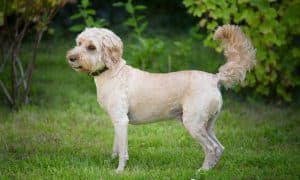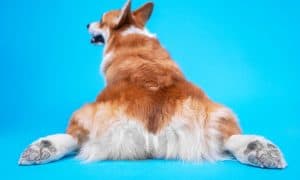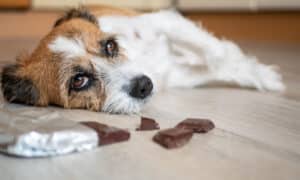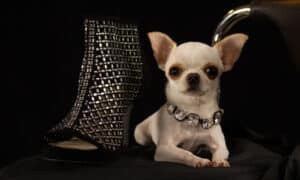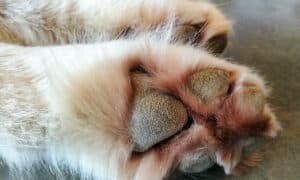“This post contains affiliate links, and I will be compensated if you make a purchase after clicking on my links.”
It’s a simple fact of life: Dogs poop. They pee. They have heat cycles. They sit their bare bums on dirt, mud, and grime. Then, they sit on our laps, sofas, and beds… that’s why it’s so important to keep backsides and bellies cleaned—and clean cut—with a simple sanitary trim.
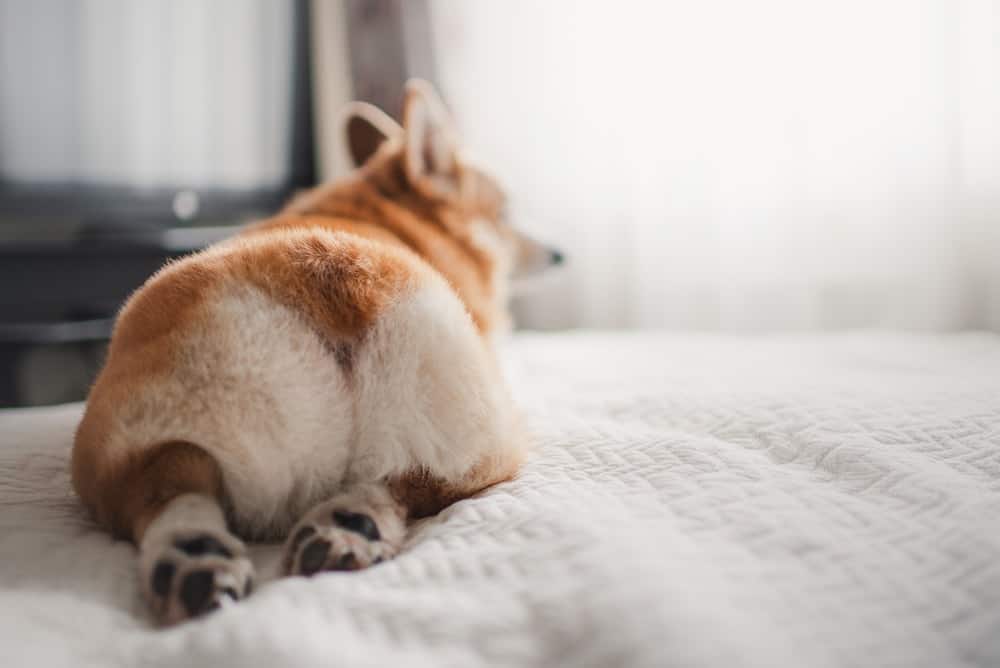
Sanitary trims, sometimes called “potty cuts,” keeps heiny hair free of tangles, mats, and traps for urine, feces, dirt, associated bacteria and odors. Besides the ick-factor, these things not only spread around your environment, but also leave your dog at risk for developing irritation and infection if left unchecked. Luckily, it’s easy to safely give your dog a sanitary trim at home.
Remember, grooming should be a positive and painless experience for your best furry friend, so a slow and careful touch is essential. Your dog’s backside and belly are especially sensitive areas that should only be very gently cleaned, brushed, and trimmed. If your dog isn’t accustomed to regular grooming or sanitary trims, it may be helpful to find an assistant or employ a treat dispenser to provide a distraction and positive reinforcement. (You’ll also want to start incorporating these 7 Steps to Raising a Dog That Enjoys Being Groomed!)
Which Dogs Need Sanitary Trims?
Any dog with fur or hair that continues to grow will benefit from a sanitary trim. Breeds like Doberman Pinschers, Boxers, Greyhounds, or dogs with similar short coats will likely never need a trim, while longer-coated dogs or those with continually growing hair will need regular sanitary trims.
Getting Started
Before beginning your dog’s trim, or any grooming procedure, make sure your pup’s coat is clean and dry. Gather your supplies, then secure your dog in your at-home grooming station. If you don’t have a portable grooming table at home, a countertop, table, or even the floor will work. A non-slip surface will help your dog to feel more comfortable and a leash will keep him from walking away mid-groom. Of course, remember to never leave your pup unattended on any elevated surface.
What You’ll Need
Slicker Brush
Stainless Steel Comb
Clippers
When it comes to choosing clippers for your sanitary trim, you have a few options. Certified Master Groomer and Andis Grooming Educator, Nicole Kallish suggests either an adjustable blade clipper, like the Andis Pulse Li5, or a detachable blade clipper, like the Andis Pulse ZR II, with a 10-blade. Additionally, if you aren’t very comfortable using clippers yet, Nicole suggests using a short attachment comb that prevents the clipper blade from directly touching your dog’s skin.
In the video below, Nicole demonstrates easy sanitary trims for both male and female dogs with assistance from adorable demo dogs, Brody and Pippa:
Tips & Tricks
• Trimming the hair on your dog’s belly area can be done either by lifting your dog’s rear leg, or if they’re a smaller pup, by having them stand on their hind legs. When lifting your dog’s rear leg, remember to hold the leg in its natural position. Do not pull it backward, outward, or overextend it.
• When clipping a male dog’s belly area, always trim from back to front, lightly skimming your clippers over the fur and being extra careful of skin folds and body parts. Trim up to about the male dog’s navel, and a bit down the inner thighs. The process is similar for a female, but there is no need to trim as far up as the navel. For a female, you may even choose to use a comb attachment to leave belly hair trimmed but slightly longer than you would on a male.
• When trimming your dog’s backside, use one hand to hold the tail up and out of the way to the side. If your dog has very long hair on their tail, use a hair clip to hold the hair out of the way. Use your clippers to very lightly trim away fur, working from the outside-in, from each direction toward the bum. Nicole also recommends trimming the underside of the base of the tail, about an inch, to further assist in keeping the area clean and sanitary.
• After clipping, gently brush or comb to check for missed hairs or mats the clippers may have missed.
• While it’s not technically part of a sanitary trim, if you have a breed with long hair or feathering on the back of their legs, like an Australian Shepherd or Golden Retriever, that hair can be trimmed with scissors or using clippers with a 30-blade and a longer comb attachment to keep the hair from getting in the way and becoming soiled during potty breaks.
Use the tips above to make sanitary trims a regular part of your at-home grooming routine and avoid potential cleanliness, health, and odor issues in your furriest family members. And, be sure to visit Andis Grooming College for answers to commonly asked questions, how-to videos, and step-by-step guides to grooming your pets at home.





